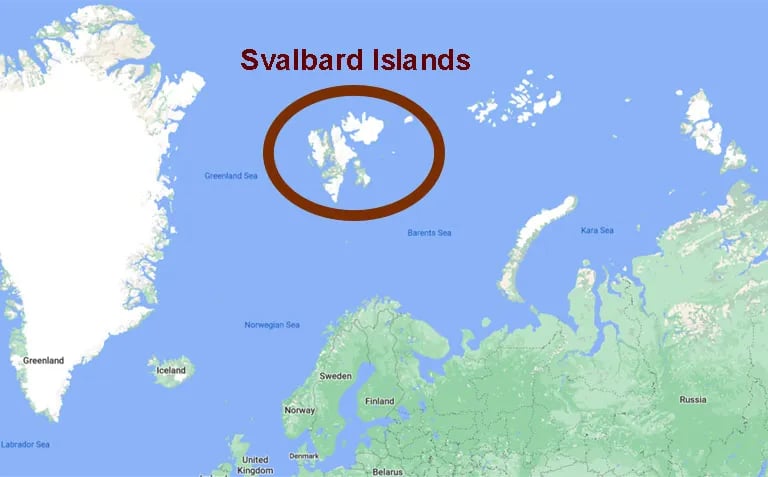The Town Where It's Illegal to Die?
Uncover the truth behind the myth that it's illegal to die in Longyearbyen, Norway, and explore other places with unusual laws surrounding death.
3/23/20253 min read


Longyearbyen: The Town Where It’s Illegal to Die… Apparently
Did you know there’s a town in Norway where it’s illegal to die? At least, that’s what the internet says. It conjures up images of a corpse being arrested and thrown in jail. “Barbaric!” scream those who believe absolutely anything they read online. But what’s the truth about this place?
Let’s dive into the fascinating reality of Longyearbyen and why this myth has persisted for so long.
Where is Longyearbyen?
Longyearbyen is the world's northernmost settlement and the largest inhabited area of Svalbard, Norway. It’s a town known for its coal mining history, tourism, and scientific research centers in biology, geology, and geophysics. Here are some quick facts about Longyearbyen:
Population: Around 2,400 residents from 53 different countries.
Tourism: Approximately 115,000 visitors annually, with 35,000 arriving by cruise ship.
Transportation: It has an airport with regular flights from SAS and Norwegian Airlines.
Fun Facts:
There’s only one grocery store but a university campus for 300 students.
Residents must learn to use firearms because polar bears often wander through town.
The streets have numbers instead of names.
Seeing whales from your living room window isn’t unusual.
The Northern Lights are often visible during the winter months.
Now that we have a picture of what kind of place Longyearbyen is, let’s get to the real question—why can’t you die there?
Why is It “Illegal” to Die in Longyearbyen?
1. The Permafrost Problem
Longyearbyen is built on permafrost, meaning the ground remains frozen year-round. Permafrost is a combination of soil, rocks, and sand held together by ice—harder than concrete. This frozen ground doesn’t allow bodies to decompose properly.
In 1918, the Spanish flu killed eleven people who were buried in the local graveyard. In the 1950s, researchers discovered their bodies had not decomposed at all. Worse, the viruses that caused their deaths were still present in their frozen tissues. For public safety, the town decided to prohibit burials in Longyearbyen.
2. Lack of Medical Facilities
Longyearbyen is a small town with limited healthcare services. While they have a hospital, it’s not equipped for extreme trauma, long-term elderly care, or end-of-life care. If someone is seriously ill, they are usually sent to mainland Norway for treatment. Residents are even required to have an address on the mainland in case they need long-term medical care.
So, while it’s not illegal to die there, it is impractical. The town does allow cremated remains to be buried there, but traditional burials have been off-limits since the 1950s.
Is It Actually Illegal to Die in Longyearbyen?
No. There is no law that makes dying in Longyearbyen illegal. The myth comes from a 2008 BBC article titled “Why Dying is Forbidden in the Arctic.” The article’s clickbait title and misleading wording made people believe there was an actual law against dying in Longyearbyen. Over time, this myth was recycled and exaggerated, leading to the belief that it’s outright illegal to die there.
Similarly, there is also a rumor that it’s illegal to give birth in Longyearbyen. While pregnant individuals are asked to travel to the mainland a few weeks before their due date for medical safety, there’s no law preventing births in the town.
Other Places Where It’s “Illegal” to Die
Longyearbyen isn’t the only place with strange death-related rules. Here are a few more locations that have tried to control death in bizarre ways:
1. Biritiba-Mirim, Brazil
In 2005, the mayor attempted to pass a law making it illegal for residents to die. The reason? The town’s cemetery was full, and no new burial spaces were available. The mayor even considered fining or jailing relatives of the deceased. Ultimately, the law was never enforced, but it highlighted the town’s burial space crisis.
2. Le Lavandou, France
In 2000, the mayor of Le Lavandou banned death after environmental concerns prevented the town from expanding its cemetery. The law was more of a protest against bureaucracy than a serious regulation, but it did bring attention to the need for new burial spaces.
3. Lanjarón, Spain
The mayor of this Spanish village declared death illegal until the government secured land for a new cemetery. While no penalties were ever enforced, the decree was meant to pressure officials into addressing the town’s burial shortage.
Final Thoughts
The idea that it’s illegal to die in Longyearbyen is a myth that started from a misunderstood news article. While burial is prohibited due to the permafrost, there is no law against death itself.
This quirky misconception is a great reminder not to believe everything you read online—especially when it sounds too bizarre to be true.
If you're struggling with a death related issue and need guidance, we offer consultations to support you through the journey.
📄 Download Our Grief Workbook
🎥 Watch More Videos on Coping with Loss
📅 Book a Consultation



